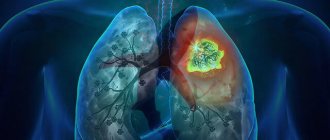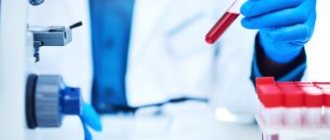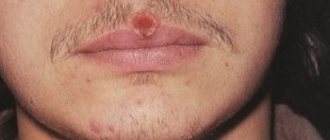Sexual infections in men develop mainly as a result of unprotected sexual intercourse due to the penetration of viruses and bacteria into the body. With good immunity of the body, most of these diseases tend to be latent and they are detected during screening or already when they affect other organs, leading to inflammation of various localizations (for example, urethritis, prostatitis, vesiculitis, cystitis, orchitis, epididymitis, etc.) or, What’s more sad is premature ejaculation, decreased erectile function, even impotence and in some cases, infertility.
General information about hidden infections
Hidden sexually transmitted infections can “pass” by and go unnoticed, although without treatment these problems significantly affect the health of men and women. Infections, their number fluctuates around the figure “30”, do not manifest themselves for a long time, but have far-reaching adverse consequences. This is about:
- chlamydia;
- mycoplasmosis;
- gardnerellosis;
- ureaplasmosis;
- cytomegalovirus;
- human papillomavirus;
- herpes.
It is not always clear to men why general malaise appears, problems with potency and other negative aspects arise. The reasons for all this must be sought in hidden infections in men. The source of infection, left without proper treatment, penetrates the genitourinary system at the cellular level. There is increased reproduction and spread of viruses, which subsequently leads to infections.
Men are diagnosed with prostatitis, urethritis, balanoposthitis, vesiculitis, funiculitis and other diseases. If a man is not treated, these diseases can cause complications in the form of impaired potency and infertility. CM "Global Clinic" provides services for identifying hidden infections and their further treatment.
You should not experiment and try to treat hidden sexually transmitted infections on your own. Consultation with a doctor, supervision of the patient, strict compliance with the requirements of medical specialists are mandatory conditions for the effective treatment of infections. The progression of the disease largely depends on the general health of the patient. If the body resists infections, then pathogens that penetrate the genitourinary system manage to hide their presence there. The disease seems to freeze and stop, waiting for favorable factors for development - weakened immunity, frequent stress, severe overwork, vitamin deficiencies in the body, etc.
Negative factors for the intensification of the disease are unfavorable environmental conditions, work in hazardous industries, etc. Infections under the influence of subjective and objective factors become more active and lead to dire consequences.
The most common diseases of men
Problems of the genitourinary system are something that every second man has to face. Which of them are the most common?
Prostatitis and prostate adenoma
The prostate in men is located between the rectum and bladder. Its main function is to produce a special secretion (PSA), which is responsible for sperm formation. Prostatitis (inflammation of the prostate) and prostate adenoma (pathological growth of the organ) are diseases of 50% of men after 40 years.
Urolithiasis and pyelonephritis
Every fourth man aged 25–50 years is susceptible to urolithiasis. Stones in the kidneys and bladder are formed due to metabolic disorders, poor diet, bad habits, working conditions, etc.
Pyelonephritis is an inflammation of the kidneys. It is often a consequence of hypothermia, a complication of urolithiasis, prostatitis and prostate adenoma. A distinctive symptom that the kidneys are not in order is swelling of the face and eyelids.
Varicocele
Testicular diseases are less common than prostate diseases, but no one is immune from them. An organ so important for men is injured, exposed to overheating and hypothermia. And some, to be honest, suffer from unsanitary conditions. Among the popular pathologies of the testicles is varicocele.
Varicocele affects 15–20% of men, mostly teenagers during puberty. The disease is varicose veins in the scrotum area. This anomaly provokes a disruption of the blood supply, which means a lack of oxygen and an increase in temperature in the delicate area. As a result, the reproductive function is disrupted. By the way, half of infertile men are also diagnosed with this disease.
A urologist treats the prostate, urinary tract, and testicles. You need to make an appointment with him if you have:
- lower back pain and problems with urination, incontinence, false urges, pain, change in urine color;
- purulent, bloody and other pathological discharge;
- narrowing of the foreskin (phimosis), erectile dysfunction;
- weight loss;
- hardening of the testicles, enlargement of the scrotum, discomfort during erection.
Symptoms of hidden infections
Males may not feel anything at first, but as the infection spreads, previously hidden signs become apparent:
- White or colorless discharge.
- Itching and burning sensations in the genital area.
- The appearance of periodic or constant pain in the area of the testicles, sacrum, and groin.
- Discomfort during ejaculation.
Only the detection of unpleasant symptoms can lead patients to a urologist. Medical specialists will conduct a diagnostic examination and prescribe treatment.
Clinical manifestations
STIs in men manifest themselves:
- burning, itching, sometimes pain, progressing when emptying the bladder or during intimacy;
- plaque on the genitals, discharge from the urethra;
- impurities in the urine in the form of mucous streaks, purulent inclusions, blood;
- rashes, sores, blisters and spots;
- enlarged inguinal lymph nodes;
- blueness or swelling of the external genitalia (not always);
- violation of potency;
- sluggish erection;
- inflammation of the prostate.
The incubation period for infections ranges from several days to four weeks.
Among the pathologies, there are also those that are asymptomatic (genital herpes, ureaplasmosis and human papillomavirus infection).
Read also: Erectile dysfunction in men
Diagnostics
It is almost impossible to determine hidden infections without the use of modern diagnostic methods. The attending physician will prescribe the necessary tests to detect infections. This could be a urologist or venereologist. Don’t be shy or hide any details; to achieve a positive treatment result, you need to trust the doctors. The specialists of the Global Clinic CM approach the identification of viruses with great professionalism. For laboratory analyses, only high-quality reagents are used. To identify viruses, the laboratory maintains the required temperature, which allows the type of male disease to be determined with the greatest accuracy.
The most terrible ailments of the stronger sex
Did you know that the hardest thing for men to do is see a specialist with problems in the sexual sphere? But this is what the representatives of the stronger sex are most afraid of.
Male infertility
The diagnosis of infertility is given to couples who have been trying for more than a year but cannot conceive a child. In 50% of cases the reason is the man. And if a woman is struggling with a disease, her husband often does not even try to discuss the issue. The result of stubbornness is serious problems in the family, even breaking up. Meanwhile, modern medicine makes it possible to identify and improve sperm quality indicators, restore reproductive function, and offer alternative methods of conception. Alas, not everyone knows this.
erectile disfunction
Or impotence, a disease common to 5 million Russian men. May be permanent or periodic.
A man is often in no hurry to admit this delicate problem even to himself. At first, he attributes everything to stress, fatigue, and “bored” family relationships. Then he begins to “treat” impotence on his own, believing that this is the only way out. This should not be done; with such a disease, the best result will be obtained from the help of a doctor.
An andrologist deals with problems of infertility, erectile dysfunction, decreased sexual desire, underdevelopment of the gonads, as well as aesthetic defects in the intimate area.
Treatment
Infections that can be contracted through sexual contact are treated with antibacterial medications. Medicines that enhance immunity and vitamins will also help in the treatment of delicate diseases. The treatment algorithm for various diseases is the same and represents a set of measures:
- Drug therapy aimed at destroying the virus that caused the disease.
- Taking medications to improve the functioning of the immune system.
- Physiotherapeutic agents.
- Compliance with a certain diet, excluding any smoked, salted, canned, fatty foods, and alcoholic drinks.
To avoid secondary infection, the patient's sexual partner also undergoes the necessary treatment.
About the prevention of male diseases
It is impossible to protect yourself from all male ailments. But it is quite possible to reduce the risk of disease by following some preventive measures:
- Follow the rules of a healthy diet: less fried, spicy, smoked, salty. Remember, obesity is one of the causes of erectile dysfunction!
- Give up bad habits.
- Do not get carried away with visiting the sauna or bathhouse. After the steam room, douse yourself with cool (but not ice-cold) water to avoid overheating.
- Use a condom for casual contact.
- Do not use the method of interrupted coitus. This can affect the prostate and sexual desire.
- If you have injured your testicles and feel pain the next day, be sure to consult a specialist.
- Maintain hygiene, wear comfortable underwear made from natural fabrics.
- Do not delay visiting your doctor if you notice abnormalities in the functioning of the genitourinary system.
- Get a preventive examination from a urologist during adolescence and after 35. (paid urology)
The stronger sex also sometimes needs help. Therefore, for diagnosis of male diseases, consultation, and effective treatment, come to Best Clinic. Remember that in the early stages everything can be treated. Take care of your health, make an appointment!
Features of the treatment of certain diseases
To get rid of chlamydia, tetracycline, fluoroquinolone, and macrolide drugs are used (for severe cases of the disease). In combination with medications, local treatment is done:
- prostate massage;
- herbal baths;
- suppositories for rectal use.
As a physical procedure, the doctor will advise you to resort to electrophoresis, magnetic therapy, and alternating current. For at least twenty-five days, the patient must strictly follow all the doctors’ recommendations and then undergo repeated tests.
For ureoplasmosis, in addition to the treatment methods listed above, medication is instilled into the urethra. Medicines prescribed by a doctor are injected into the urethra in the form of solutions. Under no circumstances should you do this procedure with the genitals on your own at home, so as not to aggravate the situation and further damage your health.
The patient will have to undergo several courses of treatment, each lasting two weeks, to restore male health. Repeated tests are necessary to monitor the progress of treatment. To restore health, if a human papillomavirus is diagnosed, the tumors will need to be removed. The Global Clinic Center uses the most modern radio wave methods to solve this problem.
Therapy
Antibacterial therapy
It is prescribed taking into account the identified sensitivity of the pathogens. Drugs from different groups are used.
Immunomodulatory agents
As a result of infectious processes, especially long-term ones, immune defense processes are disrupted. The absence of an immune response leads to a long course of the disease and the development of complications.
Enzymatic preparations
Used in complex treatment as a means of increasing the effectiveness of antibacterial therapy; in addition, they contribute to a faster resolution of inflammatory phenomena.
Multivitamins
In some cases, they are prescribed as adjuvant therapeutic drugs.
Local treatment
It involves exposure to the pathogen directly in the area of the entry gate of the infection, especially if local inflammatory manifestations are severe. This is expressed in the use of local antiseptics, lotions, etc.
What to do?
When the first signs of a sexually transmitted disease appear, you must:
- Avoid sexual contact to prevent transmission of infection.
- Contact a urologist or dermatovenerologist.
- Get a full examination from a specialist.
Since the doctor cannot determine the disease by eye, he prescribes the following tests:
- urethral smear for microscopic examination;
- bacteriological culture of discharge;
- PCR or ELISA for major STIs.
If damage to the pelvic organs is suspected, an ultrasound scan is prescribed. Further tactics will depend on the results obtained.
STD symptoms in men - how long does it take to appear?
The incubation period of STDs in men is the period of time from the moment of infection until the appearance of the first symptoms of the infectious process. It is necessary for the accumulation of the pathogen in the structures of the male urogenital tract and the development of inflammation.
This period of time is not the same for various STD pathogens in men:
- For gonorrhea it is several days.
- When infected with pathogens of chlamydia, ureaplasmosis, trichomoniasis, mycoplasmosis, it can last for a period of up to several weeks (3-5 weeks).
- For syphilis - about 2-4 weeks.
The duration of the incubation period is influenced by:
- the number of microorganisms that have entered the man’s body;
- condition of the mucous membranes of the structures of the urogenital tract;
- state of the immune system.
Basic concepts and classification
Traditionally, sexually transmitted diseases include the following conditions:
- trichomoniasis;
- gonorrhea;
- chlamydia;
- syphilis;
- HPV infection;
- genital herpes;
- CMV infection;
- mycoplasma infection caused by Mycoplasma genitalium.
The photo shows a rash due to candidiasis
External manifestations of ureaplasmosis
Infection caused by Mycoplasma hominis
A special position is occupied by urogenital candidiasis, ureaplasma and mycoplasma infections caused by Mycoplasma hominis. The causative agents of these diseases are present in the body of almost every person and belong to the normal microflora. They can be transmitted sexually, but are not considered an STI. Despite this, these infections are usually studied together with classic STDs, since they often accompany chlamydia, trichomoniasis and other infectious diseases.
Rare sexually transmitted diseases:
- inguinal granuloma;
- lymphogranuloma venereum;
- chancroid;
- molluscum contagiosum;
- phthiriasis (a disease caused by pubic louse).
Classification of STIs
There are several dozen sexually transmitted infections in total. All of them are divided into several groups:
- Viral.
- HIV. With the human immunodeficiency virus, the immune system suffers and is greatly reduced. Today, with timely diagnosis of the disease and compliance with treatment, HIV may not progress to the dangerous stage of AIDS. The incubation (asymptomatic) period can last up to a year. In Russia today there are about 1 million HIV-infected people registered.
- Hepatitis B. This is an infectious disease in which viruses entering the body begin to destroy liver cells. Distinctive symptoms include nausea, vomiting, yellowing of the skin and whites of the eyes.
- Genital herpes. The source of infection is the liquid inside the herpes blisters. Once in the blood, the virus spreads to tissues and organs. It remains asymptomatic for a long time, then watery blisters appear. In men, blisters are located on the penis, testicles, buttocks, or around the anus.
- Molluscum contagiosum. Appears as small, dense bumps on the skin. May increase in size. Under conditions of strong immunity, the disease is well cured and does not cause complications.
- Bacterial.
- Syphilis. Its causative agents are bacteria - Treponema pallidum. Thanks to antibiotics, the disease is easily treatable. Penetrating into the body, they cause microtraumas on the mucous membranes and skin.
- Gonorrhea. People call it “hussar runny nose,” since the main symptom is yellow-green purulent discharge from the genitals.
- Chlamydia. Chlamydia in the human body begins to actively multiply when immunity decreases, causing a pathological process. Chlamydia can also be caused by other diseases, such as urethritis. An untreated disease can cause male infertility.
- Candidiasis. A distinctive feature of this disease is the appearance of a white coating (curdled discharge) on the head of the penis.
- Urethritis (inflammation of the urethra). It swells and its lumen narrows. A man experiences burning pain and discomfort when urinating or having sexual intercourse.
- Pubic lice (pediculosis pubis). This is a skin infection caused by parasites, which causes severe itching and pain in the affected area. Lice can breed in the anus, armpits, and genital area.
- Scabies. The disease is caused by the scabies mite (itch). The main symptom is the appearance of raised, white, long bumps on the skin and itching at night.
All these diseases pose a threat not only to the male body, but also to the health of his partner. Some sexually transmitted infections are fraught with the development of cancer.
STDs are transmitted:
— For any type of sexual intercourse (vaginal, oral, anal);
— Through sperm, vaginal secretion;
- Breast milk;
— In contact with an infected person who has open sores or rashes;
— In case of contact with the patient’s blood;
— In case of poor sterilization of instruments;
— Through personal hygiene and household items (rare, but there are confirmed cases).
Sign up for a consultation
Types of STDs
Experts classify such infections into 4 areas:
- fungal infections (various candidiasis);
- viral pathologies, which include HIV, hepatitis C, genital herpes, anogenital condylomatosis;
- parasitic diseases (pediculosis pubis, trichomoniasis);
- bacterial infections (gonorrhea, chlamydia, syphilis, etc.).
Some of these infections are accompanied by unpleasant symptoms and reduce the quality of life, without significantly affecting the body as a whole. Others are extremely dangerous conditions that threaten the health and even life of the patient.










